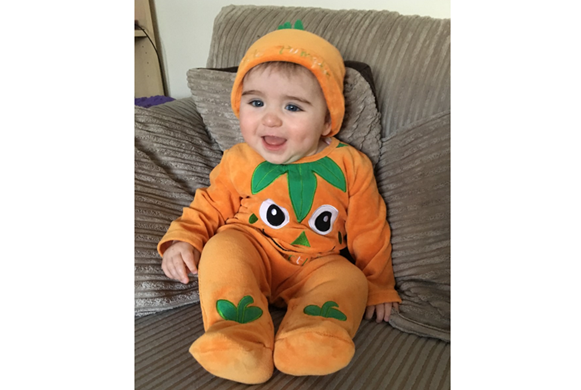Making the most of Halloween and Bonfire Night
Published Date: 29 Oct 2019

Crisp leaves crunching under our feet, darkening skies, evenings curled up under a blanket – it’s that time of year yet again as we huddle together with our loved ones and celebrate the fun of Halloween and the magic of Bonfire Night.
I’ve always loved this season, though as a deaf person it does come with some challenges. I’m in the unusual position of being able to spot these potential difficulties ahead of time for my daughter as I’ve been through it all myself.
Now admittedly, my first priority for Halloween last year was ensuring Isabelle was dressed in the cutest pumpkin outfit possible. Mission accomplished, I then had the tricky challenge of keeping her hearing aids on with the accompanying hat which didn’t have much wiggle room.
I’m aware there are custom made headbands available these days but would Isabelle keep one of these on? Of course not! To be fair, she didn’t keep the hat on either. I took a quick snap and decided not to worry about the headgear. This wasn’t the worst decision as some hats cover the microphones and muffle the sound, I’ve experienced this myself and it just makes life that bit harder. Going a size up can help with this. If I skip the headgear these days it’s nothing to do with sound, it’s to avoid the dreaded hat hair!
Another thing to be mindful of at Halloween is that many children love to wear masks with their creepy costumes. This can be problematic for some deaf people as it prevents them being able to lip-read. A great alternative is face painting, perfect for that zombie look but still allowing for ease of communication. The big night arrives and children line the streets as they march up and down playing Trick or Treat. If you can, try and pick a well-lit neighbourhood or at least take a torch. This will make so much difference to a deaf child who relies on visual cues much more than a hearing child.
Onto Bonfire Night – sparklers, hot chocolate and a glittering display of fireworks. My biggest fear last year was losing Isabelle’s hearing aids in a dark field. We will definitely be using her clip on retainer for her cochlear implants this year and regularly checking they are in place. Like most toddlers, I’m sure she would delight in throwing them directly into a muddy puddle!
Both events are typically celebrated in large groups or crowds in noisy, lively environments. Whilst exciting, they can be quite tiring for deaf people who need to work twice as hard to pick up the speech of friends and family.
Whilst I would never place limitations on Isabelle taking part in anything, consider what’s best for your family, some children may prefer fireworks in the back garden or a Halloween party at home. This year we are attending a smaller fireworks display because she was overwhelmed last year.
If you have a radio aid, it might be an idea to take it along to a big event to help your child hear you over the babble. Many people choose to wear ear defenders at loud events and deaf children are no exception – it will help protect their natural hearing and tone down the volume. You also have the added advantage of being able to adjust their hearing technology and turn them down or even off if it gets too loud.
However you celebrate, whatever adjustments you make, wrap up your little witches and wizards, stay safe and enjoy making new memories as a family!
